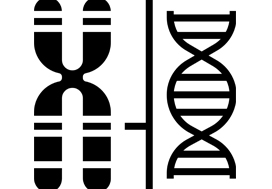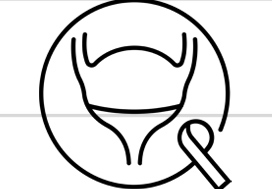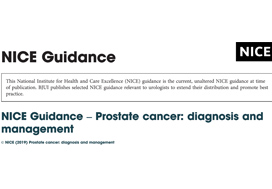Editorial: PSMA PET/CT imaging for primary staging of intermediate and high-risk PCa
In this month’s issue Yaxley et al. [1] describe a retrospective study of 68Ga-labelled prostate specific membrane antigen (68Ga-PSMA) positron emission tomography – computed tomography (PET/CT) in 1253 men at primary staging. The primary aim was to determine the risk of metastatic disease on 68Ga-PSMA PET/CT in risk categories including prostate specific antigen (PSA) level, ISUP grade and multiparametric magnetic resonance imaging (mpMRI) stage. The majority of patients had PSA < 10 ng/ml (78%) and / or T2 tumours (74%) with a relatively even distribution across ISUP grades from 1 to 5. Overall, metastases were detected in 12.1% of men and unsurprisingly, were more common in patients with high PSA >20ng/ml and/or ISUP 4-5 and/or T3b stage. Increasing PSA, ISUP grade and T-stage were all statistically significant prognostic factors on univariate and multivariate analysis. In men with at least one intermediate risk factor (T2, PSA 10-20 ng/ml, ISUP 2-3), 5.2% had metastases and in those with at least one high risk factor, 19.9% had PSMA-avid metastases.
On a sub-analysis of lymph node metastases (107 men), there was increased risk of nodal disease with increasing PSA, ISUP grade and T-stage. Of note, nearly 50% of lymph node metastases were outside an extended lymph node dissection field. Skeletal metastases, occurring in 59 men, were also more frequent in these higher risk groups. Interestingly, not all primary tumours (91.7%) were PSMA-avid (SUVmax > 3.0), consistent with previous estimations of less than 10% of prostate cancer not expressing PSMA significantly.
There is a large body of evidence supporting the use of 68Ga-PSMA PET/CT in biochemical recurrence of prostate cancer, with superior sensitivity over other PET tracers such as 18F-choline or 18F-fluciclovine, particularly at low PSA levels (1 and 2ng/ml, respectively) [2,3]. There is less evidence supporting the use of 68Ga-PSMA PET/CT in primary staging, although the literature that does exist is positive. In 130 patients with intermediate or high-risk disease, sensitivity and specificity for lymph node detection on a template-based analysis has been reported to be 68.3% and 99.1%, respectively, significantly better sensitivity than conventional morphological imaging (27.3% and 97.1%, respectively) [4]. Whilst, the negative predictive value might not be sufficiently high to avoid considering lymph node dissection in patients at increased risk of nodal metastases, there is nevertheless potential to substantially improve on conventional morphological imaging for nodal staging. In addition, there is evidence that 68Ga-PSMA PET/CT leads to changes in management in at least 21% of patients being staged with intermediate or high-risk disease [5]. The large retrospective cohort reported by Yaxley et al. [1] contributes to this growing evidence base and suggests that 68Ga-PSMA PET/CT has a place in staging high-risk, and probably intermediate risk, patients before definitive treatment. The retrospective nature allows potential referral bias but the data benefits from a large cohort in real-life current practice.
What this study does not tell us is the incremental benefit of 68Ga-PSMA PET/CT over conventional imaging with mpMRI, bone scan and CT scan. However, the prospectively recruiting proPSMA study will provide these data shortly [6]. Secondly, no histopathological or follow up reference standard was available in this study. However, 68Ga-PSMA PET/CT is known to be very specific with few false positive results and the authors adopted a relatively robust criterion for positivity (moderate or high uptake with a CT correlate) to minimise false positive results. However, some sensitivity may have been lost, e.g. mildly positive metastases or PSMA-positive but CT-negative bone lesions, a not infrequent occurrence in our experience. An additional practical detail is that contrast-enhanced CT was employed to aid differentiation of ureteric activity from abdominal and pelvic lymph nodes. This is not routine in all PET departments.
The results from the proPSMA study are eagerly awaited [6]. In the meantime, the imaging and clinical prostate community will also need to tackle the issues of having several 68Ga and 18F-labelled PSMA analogues available to choose from, with subtle differences in biodistribution, diagnostic accuracy and cost. There seems no doubt however, that PSMA-based PET imaging will continue to play a substantial part in the management of patients with prostate cancer at various points in their management pathway and that robust prospective evidence will continue to accumulate to a level that funders will not be able to ignore.
References
- Yaxley J, Raveenthiran S, Nouhaud FX, et al. Risk of metastatic disease on 68Ga-PSMA PET/CT scan for primary staging of 1253 men at the diagnosis of prostate cancer. BJU Int 2019; xx: xxx-xxx.
- Treglia G, Pereira Mestre R, Ferrari M, et al. Radiolabelled choline versus PSMA PET/CT in prostate cancer restaging: a meta-analysis. Am J Nucl Med Mol Imaging 2019; 9: 127-39.
- Calais J, Ceci F, Nguyen K, et al. Prospective head-to-head comparison of 18F-fluciclovine and 68Ga-PSMA-11 PET/CT for localization of prostate cancer biochemical recurrence after primary prostatectomy. J Clin Oncol 2019; 37: 7_suppl, 15-15.
- Maurer T, Gschwend JE, Rauscher I, et al. Diagnostic efficacy of (68)Gallium-PSMA positron emission tomography compared to conventional imaging for lymph node staging of 130 consecutive patients with intermediate to high risk prostate cancer. J Urol 2016; 195: 1436-43.
- Roach PJ, Francis R, Emmett L, et al. The Impact of (68)Ga-PSMA PET/CT on Management Intent in Prostate Cancer: Results of an Australian Prospective Multicenter Study. J Nucl Med 2018; 59: 82-8.
- Hofman MS, Murphy DG, Williams SG, et al. A prospective randomized multicentre study of the impact of gallium-68 prostate-specific membrane antigen (PSMA) PET/CT imaging for staging high-risk prostate cancer prior to curative-intent surgery or radiotherapy (proPSMA study): clinical trial protocol. BJU Int 2018; 122: 783-3.










